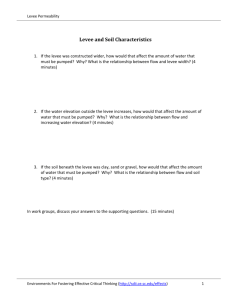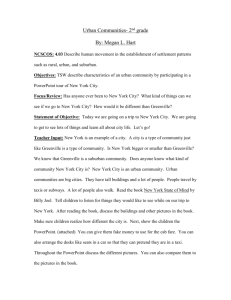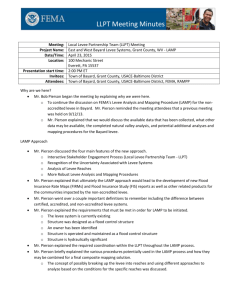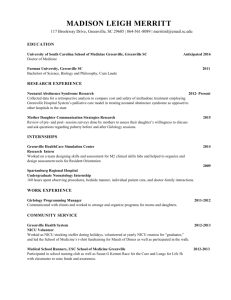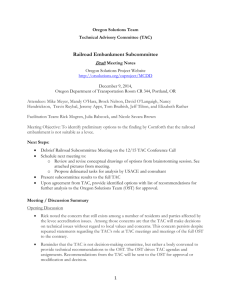The Great Flood, Ryan Starrett - The Delta Center for Culture and
advertisement
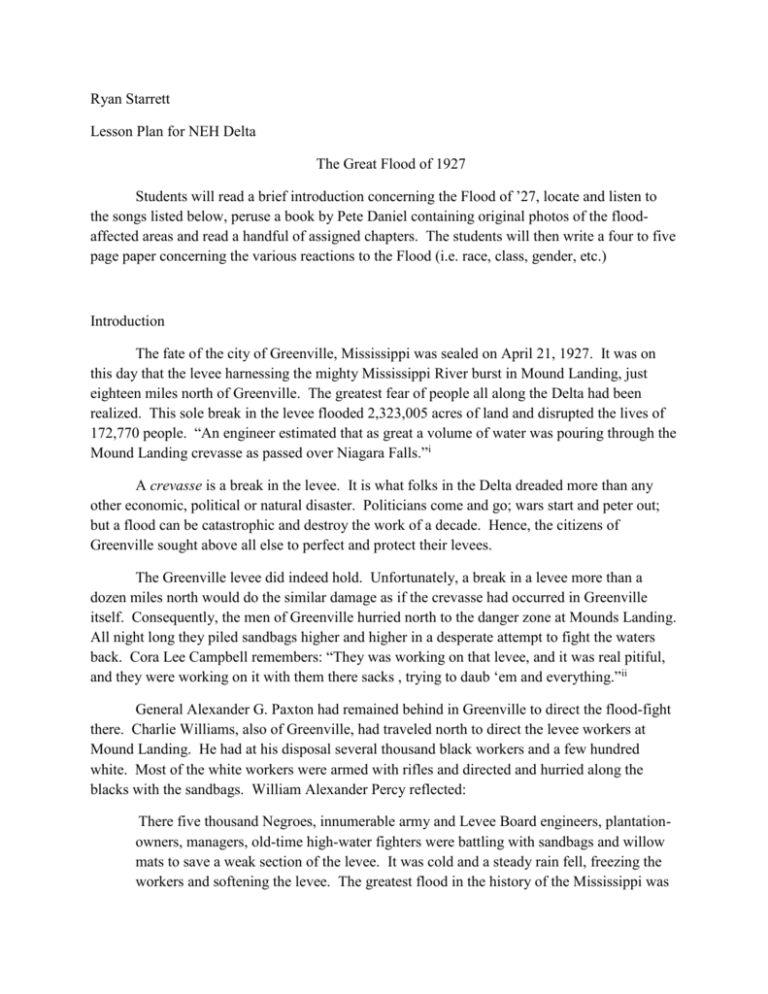
Ryan Starrett Lesson Plan for NEH Delta The Great Flood of 1927 Students will read a brief introduction concerning the Flood of ’27, locate and listen to the songs listed below, peruse a book by Pete Daniel containing original photos of the floodaffected areas and read a handful of assigned chapters. The students will then write a four to five page paper concerning the various reactions to the Flood (i.e. race, class, gender, etc.) Introduction The fate of the city of Greenville, Mississippi was sealed on April 21, 1927. It was on this day that the levee harnessing the mighty Mississippi River burst in Mound Landing, just eighteen miles north of Greenville. The greatest fear of people all along the Delta had been realized. This sole break in the levee flooded 2,323,005 acres of land and disrupted the lives of 172,770 people. “An engineer estimated that as great a volume of water was pouring through the Mound Landing crevasse as passed over Niagara Falls.”i A crevasse is a break in the levee. It is what folks in the Delta dreaded more than any other economic, political or natural disaster. Politicians come and go; wars start and peter out; but a flood can be catastrophic and destroy the work of a decade. Hence, the citizens of Greenville sought above all else to perfect and protect their levees. The Greenville levee did indeed hold. Unfortunately, a break in a levee more than a dozen miles north would do the similar damage as if the crevasse had occurred in Greenville itself. Consequently, the men of Greenville hurried north to the danger zone at Mounds Landing. All night long they piled sandbags higher and higher in a desperate attempt to fight the waters back. Cora Lee Campbell remembers: “They was working on that levee, and it was real pitiful, and they were working on it with them there sacks , trying to daub ‘em and everything.”ii General Alexander G. Paxton had remained behind in Greenville to direct the flood-fight there. Charlie Williams, also of Greenville, had traveled north to direct the levee workers at Mound Landing. He had at his disposal several thousand black workers and a few hundred white. Most of the white workers were armed with rifles and directed and hurried along the blacks with the sandbags. William Alexander Percy reflected: There five thousand Negroes, innumerable army and Levee Board engineers, plantationowners, managers, old-time high-water fighters were battling with sandbags and willow mats to save a weak section of the levee. It was cold and a steady rain fell, freezing the workers and softening the levee. The greatest flood in the history of the Mississippi was roaring south between levees that trembled when you walked on them. The workers knew the fight was well-nigh hopeless, but there was nothing else to do but fight.iii As the citizens of various Delta communities south of the water-battle braced for the worst, the workers at Mounds Landing continued their hopeless struggle. At daybreak they lost. At first, just a trickle of water poured through the sandbags. Workers frantically piled on more, but now the fate of the levee was sealed. Shortly thereafter a crevasse erupted carrying away countless levee workers to certain death. General Paxton was on the phone with one of Charlie Williams’ boss men at the time and recalls hearing, “’We can’t hold it much longer.’ Then followed three words I shall remember as long as I live—‘There she goes.’”iv Percy more poetically recounts, “The terrible wall of water like an imbecile blind Titan strode triumphantly into our country. The greatest flood in American history was upon us. We did not see our lands again for four months.”v The crevasse in Mound Landing sealed the fate of all Delta residents from the original break all the way to New Orleans. The first significant city to feel its effects was Greenville. Greenville, Mississippi has an interesting history by the standards of any city, and certainly by the standards of Mississippi. In 1927, Greenville more closely resembled seventeenth czarist Russia than it did her fellow American cities in the North and Midwest. She was ruled by the iron hand of patrician planters. Thousands upon thousands of black sharecroppers did the bidding of their de facto masters. Yet unlike czarist Russia, the planters governed the Delta upon the principle of noblesse oblige. Whereas the czars had an inexhaustible supply of serfs and could afford to rule cruelly, the gentlemen of Greenville inherited the awkward position of taking economic advantage of their leases but at the same time assuring that they would come back next year to farm the same land. As an ironic consequence the blacks of Greenville were treated better than elsewhere in the state. Despite having very little political influence, blacks were seen as very valuable property and thus worth catering to. Nevertheless, it was a serf-master relationship. James Cobb explains, “The waning political influence of blacks manifested itself in a number of ways. Whereas in 1890 roughly equal numbers of blacks and whites had been summoned for jury duty in Bolivar County, no blacks were called by 1902.”vi By 1927 an easy, stable, but unjust relationship existed between the white planter class and their black workers. This relationship would have important consequences when the Mound Levee broke and during its immediate aftermath. Music assignment: Jack Elliott “High Water Blues” Bessie Smith “Back-water Blues” Led Zeppelin “When the Levee Breaks” Big Bill Broonzy “Southern Flood Blues” Peruse Pete Daniel’s Deep’n As It Come Reading assignment: John Barry’s Rising Tide chs 24-27 William Alexander Percy’s Lanterns on the Levee chs 19-20 Lyle Saxon’s Father Mississippi: The Story of the Great Flood of 1927 chs 21-29 i Daniel 7 Daniel 12 iii Percy 247 iv Daniel 12 v Percy 248 vi Cobb 90 ii
